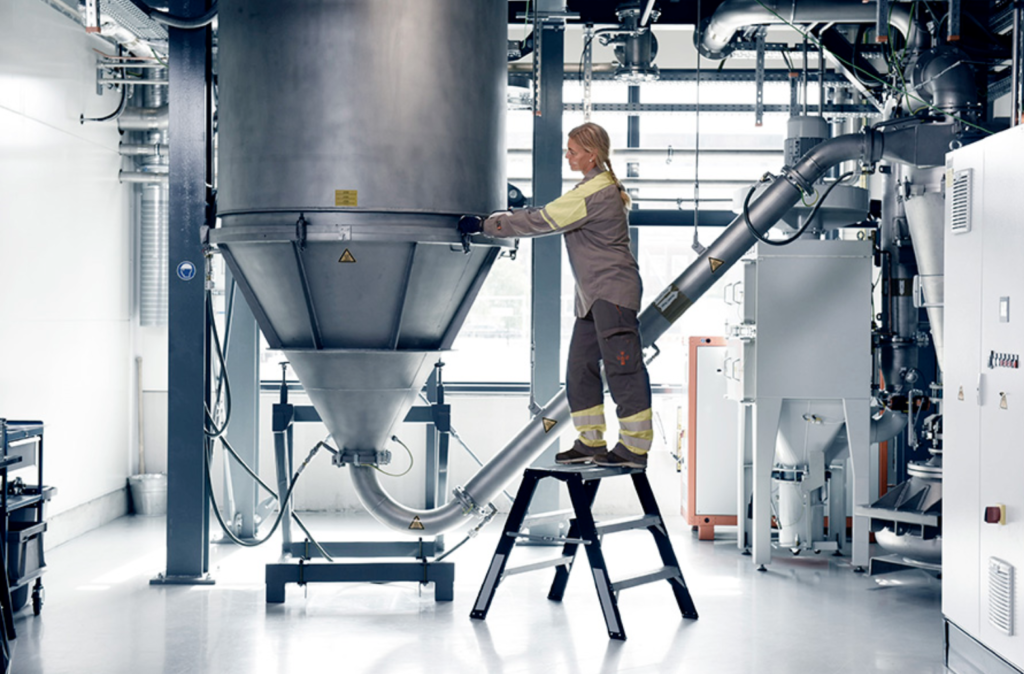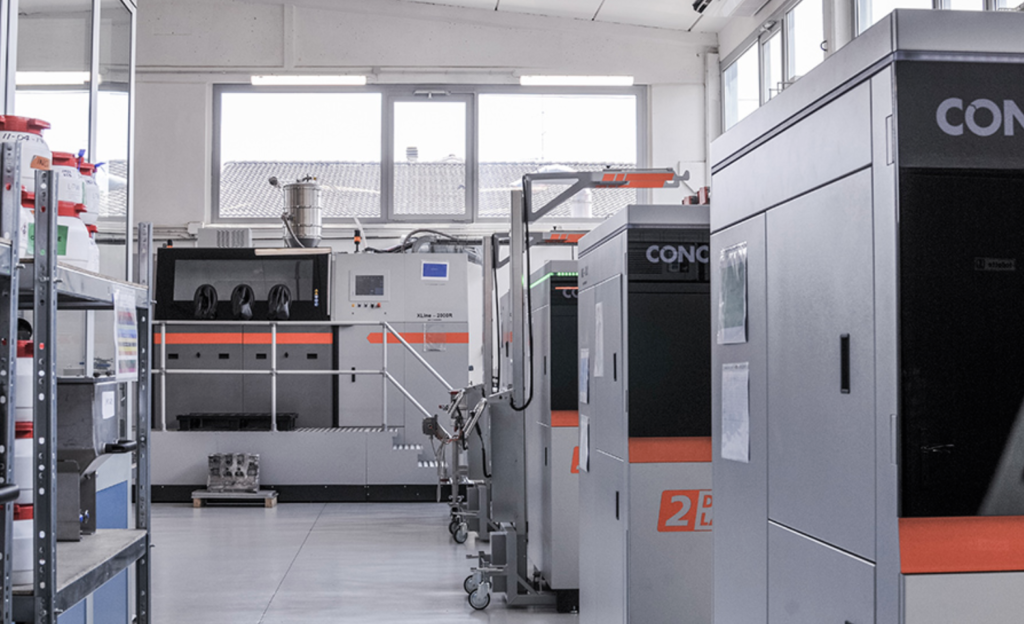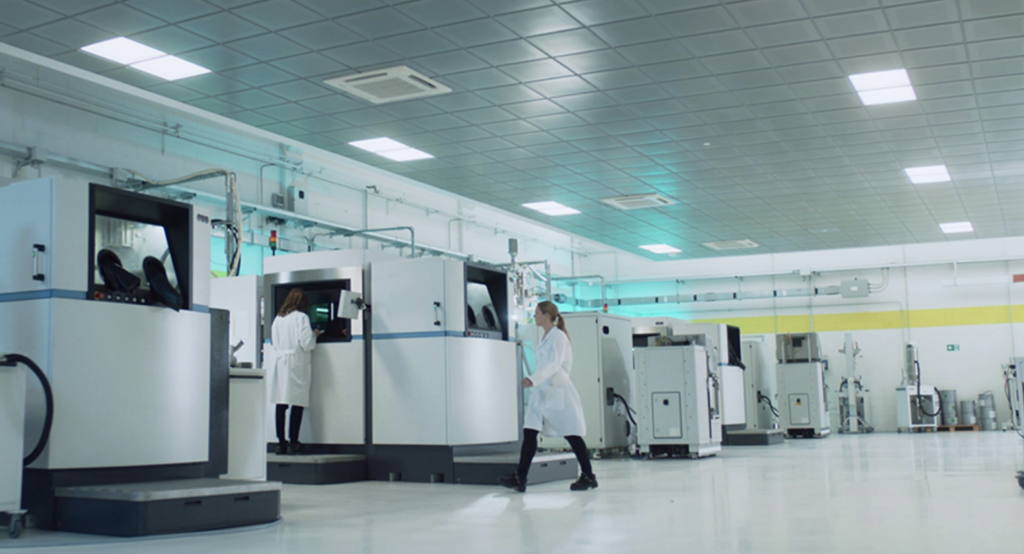BeamIT is a leading Italian service bureau that is not only a large player, but also on the cutting edge of 3D printing technology. With a lot of aviation and defense work under its belt, the firm also pioneered the use of copper in electron beam melting. Through partnering with another leader, Swedish metals firm Sandvik, BeamIT is making strides forward.
Just this August BeamIT bought a competitor, ZARE, making it a company with five production sites, 100 staff and 25 AM technology flavors on offer. Just before this, it acquired Pres-X, a post-processing startup specializing in HIP and other finishing methods. These acquisitions are possible in part because Sandvik is an investor in BeamIT. Having an $11B-revenue materials company backing you is quite the luxurious position to be in. In the polymer world, we can see parallels with BASF investing in Materialise and buying Sculpteo outright.
Right now, Sandvik is also commissioning a new powder plant for making Ni and Ti superalloys.
The company says that, “The new plant already received the prestigious ‘AS9100 Revision D’ certification for deliveries to the aerospace industry – as well as the ‘ISO 13485:2016’ certification for deliveries to the medical segment. Sandvik’s powder production facilities in Neath, UK, have also recently been awarded the ‘AS9100D’ certification for aerospace.”
These certifications are not fun to get and it must mean that Sandvik is seeing expanding opportunities for BeamIT’s business specifically (BeamIT has the same AS9100D certification), but also that it must anticipate wider demand in aerospace for superalloys. At the same time, they seem to be doubling down on their existing metals in the face of renewed commercialization in bulk metallic glasses and intermetallics, as well as other new materials, implying that they specifically think that there is more room for growth, despite new materials coming to market that outperform these superalloys.

A Sandvik powder plant. I wish she’d have more PPE.
President of Sandvik Additive Manufacturing Kristian Egeberg said,
“The AM sector is developing fast and there is a need for AM-specialist partners with the advanced skills and resources required to help industrial customers develop and launch their AM programs. The new AM-constellation consisting of Sandvik and the BEAMIT Group is extremely strong – and will provide our customers with the opportunity to access the complementary and combined power of several leading players, covering the entire AM value chain.”
BeamIT founder Mauro Antolotti says:
“The extended organization, including ZARE and PRES-X, is created to serve our customers with a true 360-degree service span. It also contributes with greater capacity and financial strength, while securing total reliability for current and new AM-customers. Adding Sandvik’s world-leading materials expertise, we can really change the game together in this high-growth area.”

A Zare now BeamIT facility.
That’s some fighting talk when Airbus sold one aircraft last month. There are some very interesting things that could happen because of such a tie-up, however.
- One is that by having the financial backing of Sandvik and access to their materials expertise, BeamIT could find it much easier to become a qualified approved vendor for more and more aerospace markets, applications, and companies than other firms. Approvals and setting up to do business with the likes of Airbus is expensive and tough. If it uses the Sandvik backing to seek out more parts, applications, and relationships, then it could be considerably more diversified than competitors. This would put it in greater financial health than others. It would also give the company a stronger negotiation position vis-à-vis the Boeings of this world.
- BeamIT itself could become a tasty morsel for Berkshire Hathaway’s Precision Castparts. The metal forging and manufacturing firm has not made any major 3D printing bets and is one of the most prominent players that could lose out when more and more aerospace parts are printed. Without a major industrialization of metal 3D printing by them, they will start to lose out on deals as they must already be doing in commercial space and other areas. To inoculate itself against the 3D printing disease, the new BeamIT may make a large enough morsel for the firm.
- BeamIT could now be an irresistible target for a company currently in the 3D printing industry wanting exposure to aerospace parts. What other way could 3D Systems or Stratasys so quickly grow their parts businesses? What of GKN or perhaps Materialise?
- BeamIT becomes the largest metal 3D printing service in the world? 3D printing services tend to stay small and local, but a series of big deals could net BeamIT a permanent advantage. Multiple sourcing needs and large players in the aviation value chain could yet stop this, but if they don’t we could have a very large player on our hands that, along with GKN, could dominate metal printing.
- Other service bureaus could avoid doing business with Sandvik in order not to aid or leak knowledge to BeamIT. Sandvik and BeamIT both are well-respected players, but this is a fear that could play on someone, especially in the closed-doors world of aviation. Companies could also perhaps avoid Sandvik in order to not feed the hand that bites them.
- Sandvik could buy BeamIT outright in order to go for higher margins. Essentially polymer PEEK company Victrex did this already setting up its own service for medical implants. You can still buy PEEK but medically approved PEEK is hard to come by and you are told to go to their parts service. In that case, Victrex has gone from selling material to very high-value parts for one single sector of its business. This could well be a model for this union as well.

A BeamIT facility.
Warren Buffet has said that,“Two super-contagious diseases, fear and greed, will forever occur in the investment community. The timing of these epidemics will be unpredictable. … We simply attempt to be fearful when others are greedy and to be greedy only when others are fearful.” I think that this best sums up the long term profit-maximizing move that could come from this alliance.
Subscribe to Our Email Newsletter
Stay up-to-date on all the latest news from the 3D printing industry and receive information and offers from third party vendors.
You May Also Like
3D Printing Financials: Prodways’ Q1 2024 Revenue Drop and Accounting Overhaul
Prodways (EPA: PWG) has released its earnings report for the first quarter of 2024, announcing modest revenue. This result is lower than last year’s, reflecting the company’s ongoing adjustments to...
3D Printing Financials: Prodways Faces Headwinds, Cuts Jewelry Printers and Cristal Dental Lab for Turnaround
Prodways (EPA: PWG), a European leader in industrial 3D printing, encountered financial challenges in 2023, as revealed in its earnings report. The company saw a decline in revenue and profitability...
Printing Money Episode 12: Q3 2023 Earnings Reports with Troy Jensen, Cantor Fitzgerald
Episode 12 of Printing Money brings with it a slightly different approach, as Alex Kingsbury sits this one out while Danny runs the show. Equity research analyst Troy Jensen, now of Cantor...
3D Printing News Briefs, November 18, 2023: Depowdering, Jewelry Patterns, & More
We’re kicking off 3D Printing News Briefs with a little business today, as Horizon Microtechnologies invested in a micro AM platform from Boston Micro Fabrication, and Rivelin Robotics announced a...





























